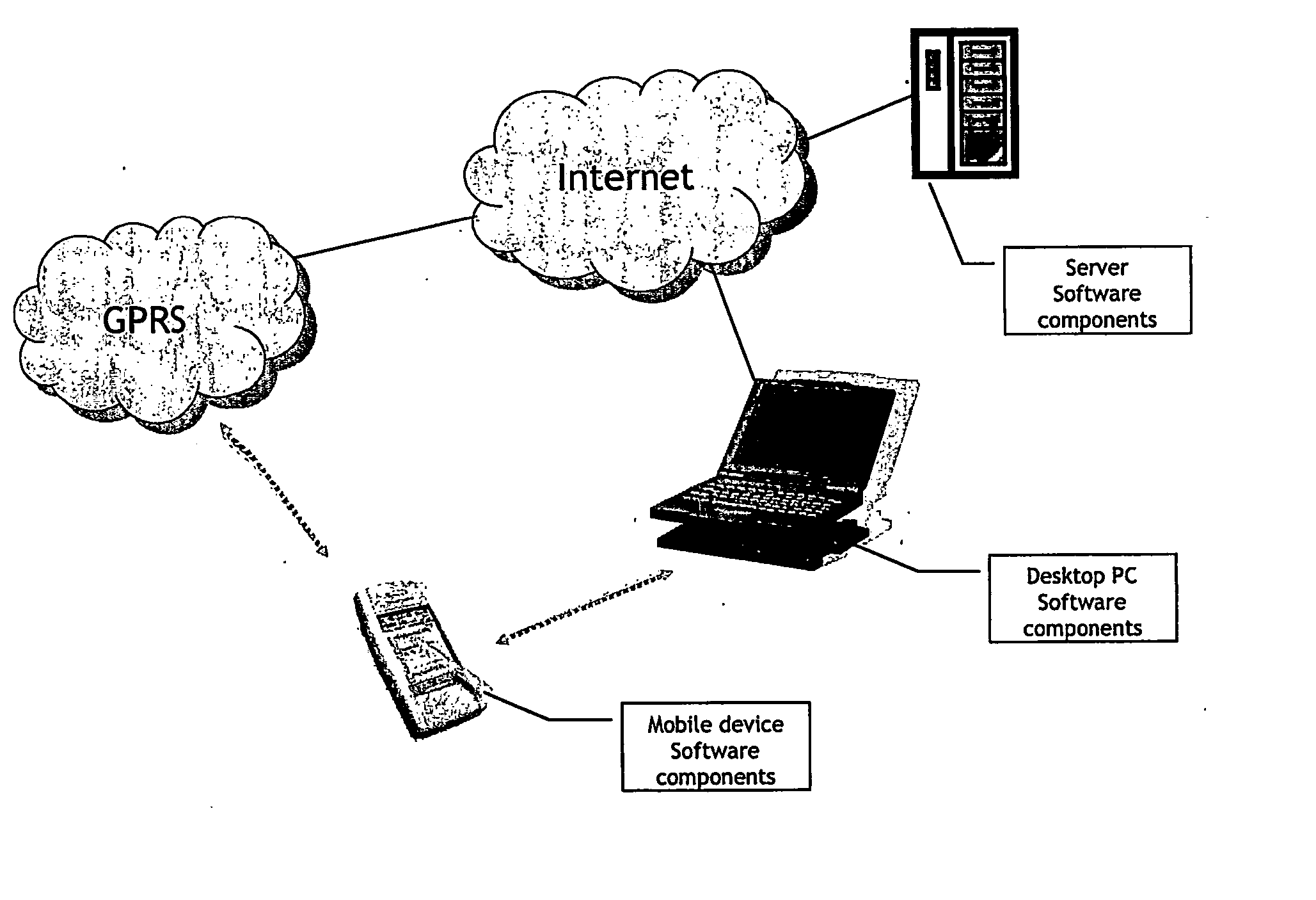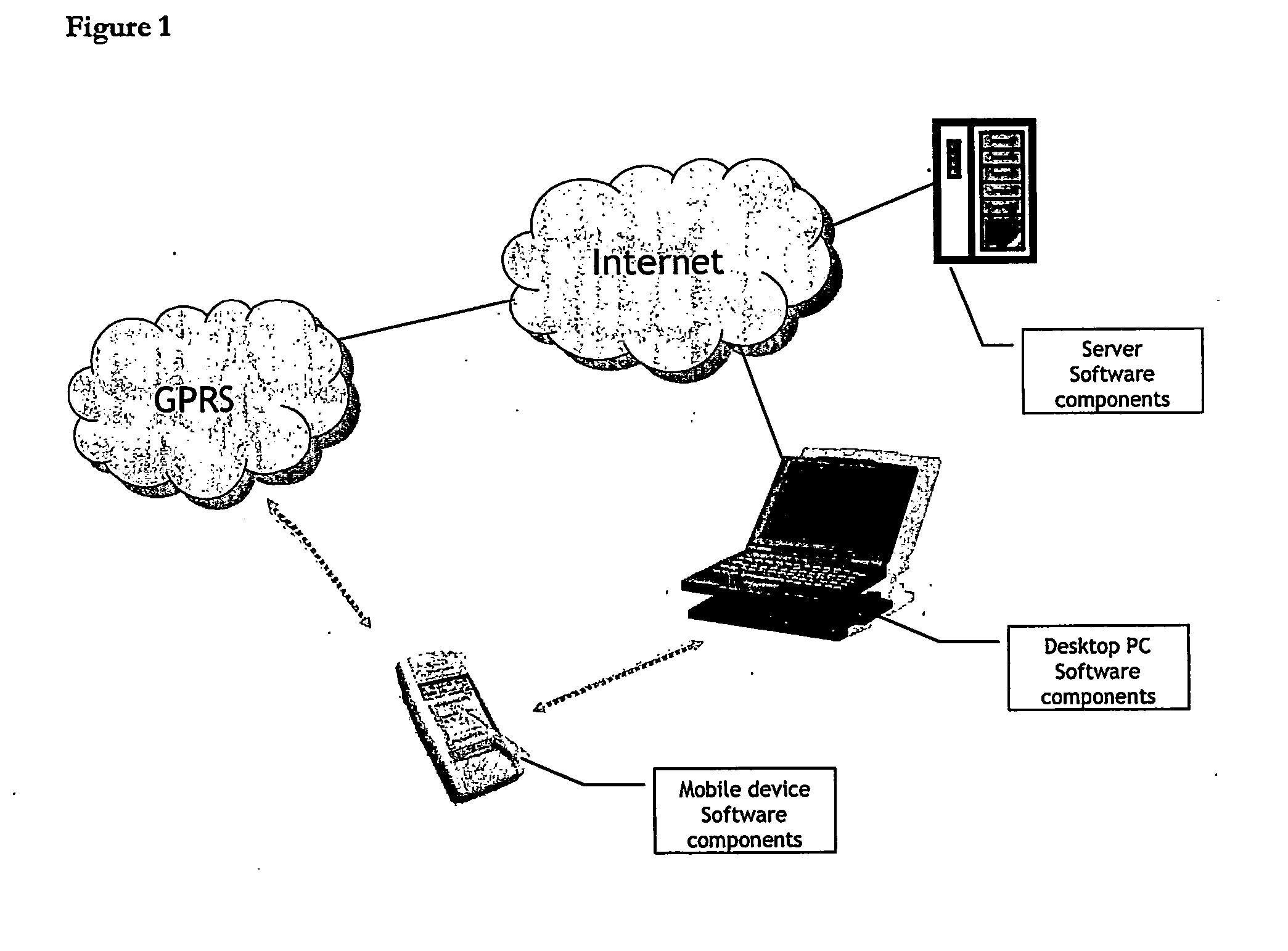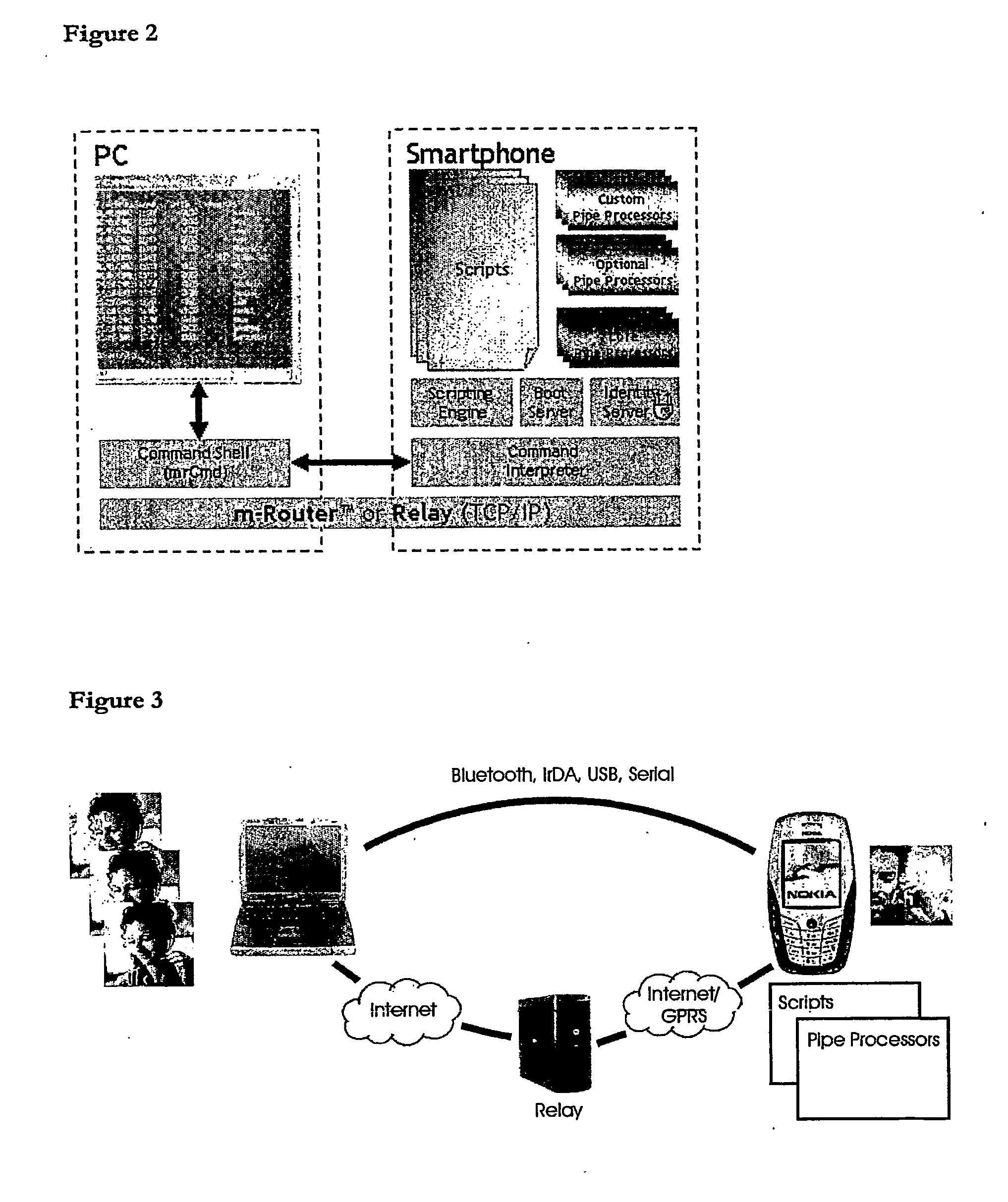Secure Multi-Entity Access to Resources on Mobile Telephones
a multi-entity access and mobile telephone technology, applied in the field of mobile telephone security multi-entity access to resources, can solve the problem that no-one has applied this approach to mobile telephones, and achieve the effect of strong authentication and greater security
- Summary
- Abstract
- Description
- Claims
- Application Information
AI Technical Summary
Benefits of technology
Problems solved by technology
Method used
Image
Examples
Embodiment Construction
A.1 Overview of mrix
[0044] The present invention is implemented using a software called ‘mrix’ from Intuwave Limited. mrix facilitates the rapid develop of networked application software for mobile devices and provides for secure multi-entity access to resources on such devices. An implementation comprises software resident on the different computing devices connected to the network, including mobile device, such as a smartphone, desktop PC and server, with an example configuration shown in FIG. 1.
[0045] Software components are required on all of the different elements in the network to facilitate rapid application development and deployment. This is illustrated by the following example for developing a networked application on the mobile device that enables a user to make full use of an enterprise CRM system for better customer relationships. To do this, software must be developed on the mobile device that can connect to an enterprise server, that implements the CRM system and man...
PUM
 Login to View More
Login to View More Abstract
Description
Claims
Application Information
 Login to View More
Login to View More - R&D
- Intellectual Property
- Life Sciences
- Materials
- Tech Scout
- Unparalleled Data Quality
- Higher Quality Content
- 60% Fewer Hallucinations
Browse by: Latest US Patents, China's latest patents, Technical Efficacy Thesaurus, Application Domain, Technology Topic, Popular Technical Reports.
© 2025 PatSnap. All rights reserved.Legal|Privacy policy|Modern Slavery Act Transparency Statement|Sitemap|About US| Contact US: help@patsnap.com



